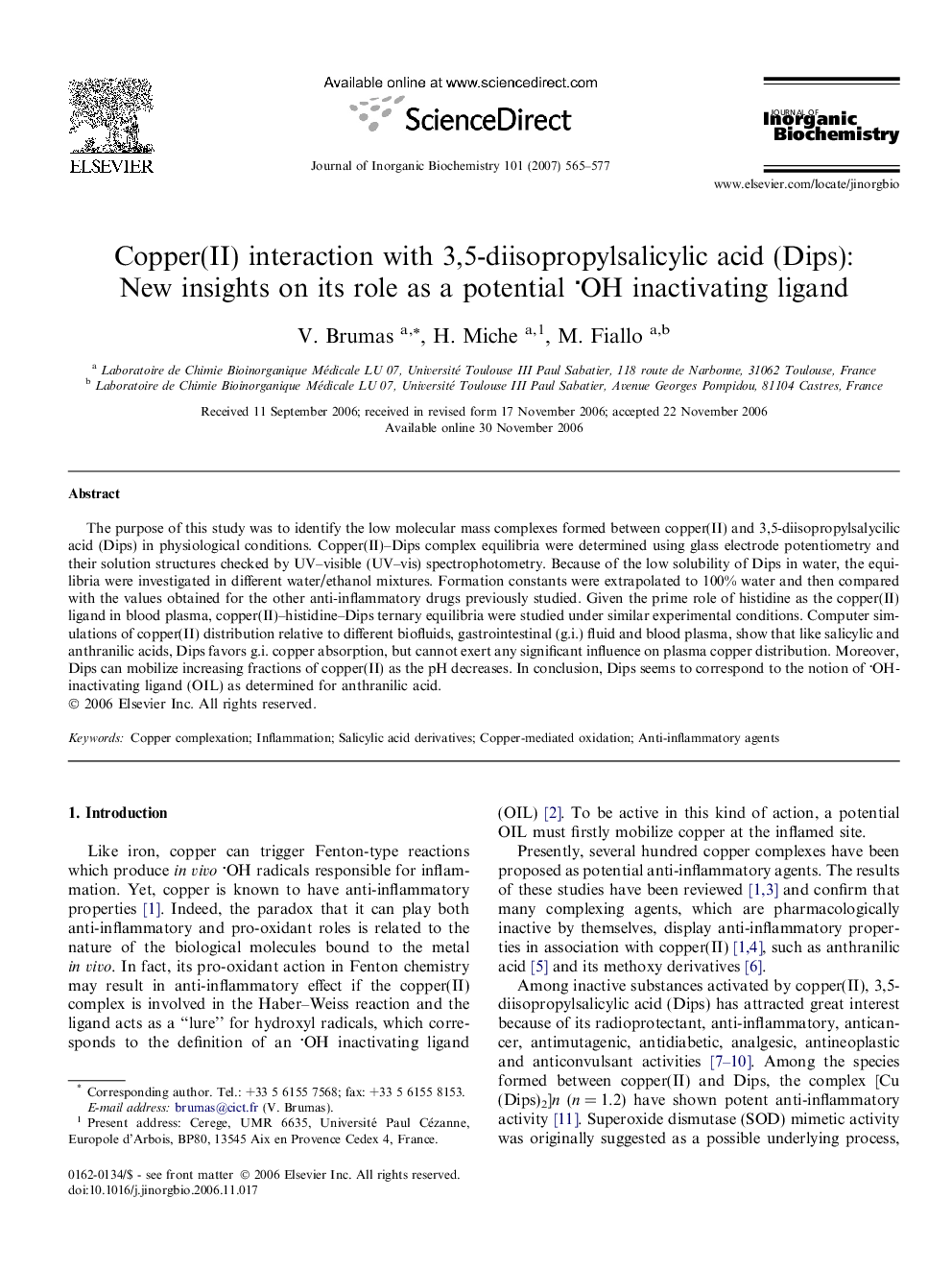| Article ID | Journal | Published Year | Pages | File Type |
|---|---|---|---|---|
| 1318129 | Journal of Inorganic Biochemistry | 2007 | 13 Pages |
The purpose of this study was to identify the low molecular mass complexes formed between copper(II) and 3,5-diisopropylsalycilic acid (Dips) in physiological conditions. Copper(II)–Dips complex equilibria were determined using glass electrode potentiometry and their solution structures checked by UV–visible (UV–vis) spectrophotometry. Because of the low solubility of Dips in water, the equilibria were investigated in different water/ethanol mixtures. Formation constants were extrapolated to 100% water and then compared with the values obtained for the other anti-inflammatory drugs previously studied. Given the prime role of histidine as the copper(II) ligand in blood plasma, copper(II)–histidine–Dips ternary equilibria were studied under similar experimental conditions. Computer simulations of copper(II) distribution relative to different biofluids, gastrointestinal (g.i.) fluid and blood plasma, show that like salicylic and anthranilic acids, Dips favors g.i. copper absorption, but cannot exert any significant influence on plasma copper distribution. Moreover, Dips can mobilize increasing fractions of copper(II) as the pH decreases. In conclusion, Dips seems to correspond to the notion of OH-inactivating ligand (OIL) as determined for anthranilic acid.
